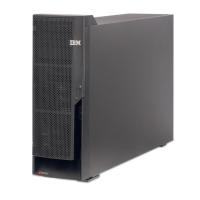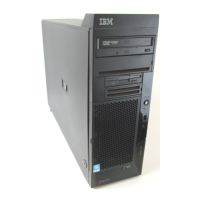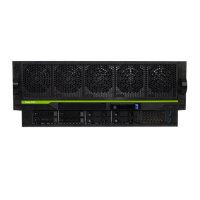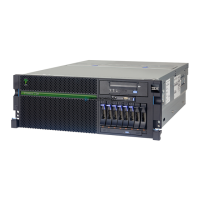5486OpS.fm Draft Document for Review October 18, 2004
548 IBM Eserver i5 and iSeries System Handbook
Cluster Resource Services consists of an open set of APIs that provide cluster
facilities. iSeries application providers and customers use the APIs to enhance
their application availability and to create, configure, and administer the cluster.
Systems are defined into the cluster as
cluster nodes. Communication interface
addresses are defined to form the cluster node-to-node interconnection links.
Resilient resources (objects replicated to one or more nodes) are associated with
a Cluster Resource Group (CRG) so they can be managed as a single unit.
Two types of CRGs are supported: one for data resilience and one for application
resilience. Data CRGs provide the control to switch the point of access for a set
of data to a backup node that maintains an exact replica of that data. Application
CRGs control switching an IP address that represents the application server to a
backup node and restart the application in the event of a primary node failure.
Cluster Resource Services includes integrated facilities such as heartbeat
monitoring, reliable message delivery, switch-over administration, and distributed
activities. The services are built on a robust cluster topology and messaging
functions that keep track of each node in the cluster and ensure that all nodes
have consistent information about the state of cluster resources.
Heartbeat monitoring ensures that each node is active. When the heartbeat for a
node fails, the condition is reported so that the cluster can automatically failover
to the resilient resources on the backup node. System Services for high
availability solutions are enhanced with real-time recording of IFS stream file
changes into journals. Data resiliency applications can use this function to
provide enhanced support for this class of objects.
IBM works closely with the cluster middleware business partners to provide
easy-to-use cluster management applications, including Lakeview Technology
and Vision Solutions.
iSeries clusters support up to 128 nodes. Any OptiConnect, WAN, and LAN
connectivity options can be used to build a cluster, as follows:
HSL copper and fiber bus connections are fully supported system features.
When used with OptiConnect software, they are attractive connectivity
methods for high-end and mid-range models existing in the same location.
IASPs and switched disk work in this environment as of V5R1.
ATM provides a high-performance connection to remote systems in the
cluster.
Ethernet and token-ring LANs are ideal for connecting low-end iSeries
models into the cluster.

